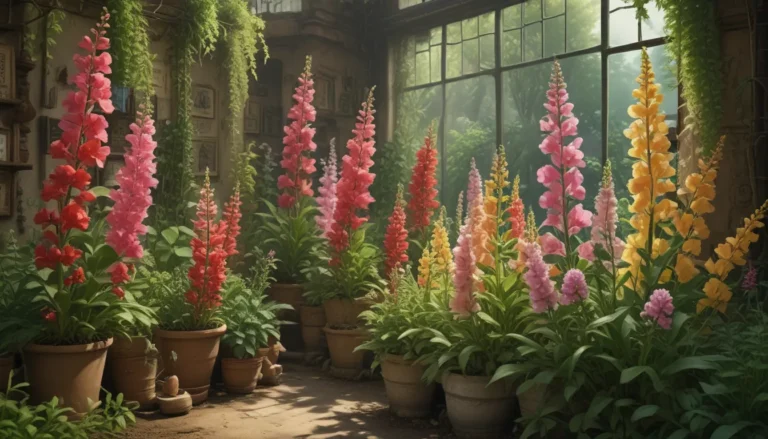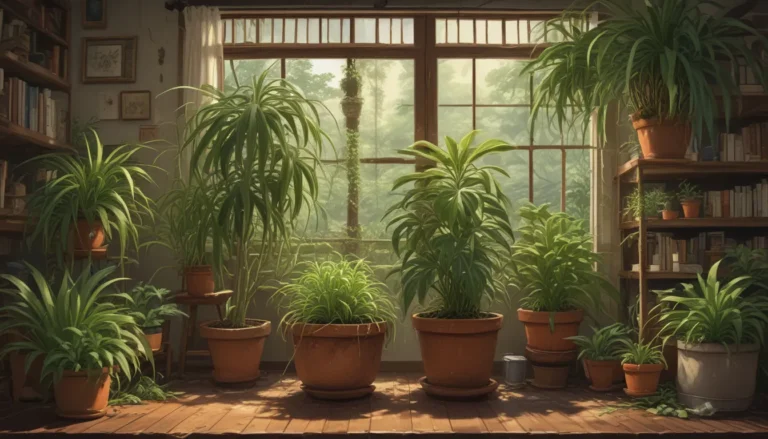The Ultimate Guide to Growing and Caring for Hollyhocks

Are you looking to add a touch of whimsy and charm to your garden? Look no further than hollyhocks! These stunning flowers are not only eye-catching but are also fantastic pollinator plants. In this in-depth guide, we’ll explore everything you need to know to cultivate and care for Alcea rosea, the common hollyhock.
Growing up to nine feet tall, hollyhocks are a striking addition to any garden. Their large, colorful flowers attract bees, hummingbirds, and butterflies, adding to the magical allure of these plants. Varieties such as A. rosea var. nigra, once admired by Thomas Jefferson, offer a rich history and vibrant presence in the garden.
Cultivation and History
Hollyhocks, belonging to the Malvaceae plant family, are native to Asia and were introduced to Europe in the mid-1500s. Once a threatened cultivar due to rust disease, hollyhocks made a comeback in the late 1800s with the development of disease-resistant varieties.
Propagation
Propagating hollyhocks from seed is a straightforward process. Seeds can be sown directly in the garden or started indoors for earlier blooms. Transplanting seedlings or nursery plants in the early spring or fall is ideal for establishing these plants in your garden.
From Seed
Sow hollyhock seeds in a sunny location with well-draining soil for optimal germination. Keep the soil moist, and expect seedlings to emerge within weeks. You can also start seeds indoors to ensure a head start on the growing season.
Transplanting
Prepare seedlings for transplanting by hardening them off and select a suitable location with adequate spacing for mature plants. Regular watering and mulching help to establish healthy root systems.
How to Grow
Provide full sun and well-draining soil for your hollyhocks. Regular watering, mulching, and occasional fertilizing support healthy plant growth. Staking may be necessary for taller varieties to prevent flopping.
Growing Tips
- Apply mulch to retain moisture.
- Ensure soil moisture and good drainage for healthy plant development.
- Plant hollyhocks along fences or walls to provide support and protection.
Pruning and Maintenance
Stake flower stalks and deadhead spent blooms to encourage continuous flowering. Transplant volunteer seedlings as needed and provide additional protection during fall transplants.
Cultivars to Select
Choose from a variety of hollyhock cultivars, ranging in colors from black and maroon to peach and pink. Select plants that suit your garden aesthetic, such as traditional Country Romance Mix or dramatic varieties like ‘The Watchman’ and ‘Halo Apricot.’
Managing Pests and Disease
While hollyhocks are generally resilient to pests and disease, common issues like aphids, earwigs, and powdery mildew may arise. Implement integrated pest management practices and remove infected plant material promptly to prevent disease spread.
Pests
- Control aphids with beneficial insect attractants.
- Manage earwigs with organic removal methods.
- Handpick Japanese beetles and slugs for effective control.
- Treat spider mites with a botanical miticide spray.
- Control weevils by physical removal and soap water solutions.
Disease
- Manage Alternaria leaf spot with fungicide applications.
- Treat Anthracnose with removal of infected plant parts.
- Prevent powdery mildew by removing infected leaves promptly.
- Control rust by watering at the soil level and selecting resistant cultivars.
Best Uses
Hollyhocks are versatile plants that attract pollinators, make stunning bouquets, and offer crafting opportunities. From creating flower fairy dolls to botanical dyeing, hollyhocks add charm to any garden space.
Quick Reference Growing Guide
Plant Type: Biennial or short-lived perennial flower
Flower/Foliage Color: Various
Native to: Asia
Tolerance: Heat
Hardiness (USDA Zone): 3-10
Maintenance: Low to moderate
Bloom Time: Summer
Soil Type: Fertile
Exposure: Full sun
Soil pH: 6.0-8.0
Spacing: 2-3 feet
Soil Drainage: Well-draining
Planting Depth: Soil surface (seeds), depth of root ball (transplants)
Attracts: Bees, birds, butterflies
Height: 3-9 feet
Uses: Pollinator gardens, cottage gardens, bouquets, botanical dye
Spread: 2-4 feet
Water Needs: Moderate
Plant Hollyhocks for Vibrant Blooms
Hollyhocks are not just flowers; they are an experience for all gardeners. From their striking blooms to their rich history, these plants add a touch of magic to any garden space. So, why not bring a touch of cottage-garden ambiance to your outdoor oasis with hollyhocks?
If you’re looking to transform your garden into a pollinator-friendly haven, consider adding hollyhocks to the mix. Their effortless beauty and functionality make them a must-have for any gardener. Share your thoughts and questions in the comments below, and let’s continue to sow the seeds of knowledge and connection in our gardening community.
For more flowering plant options and gardening inspiration, explore our guides on promoting pollination, growing a native wildflower landscape, and selecting flowering perennials for your garden.
Remember, when it comes to gardening, the possibilities are as endless as the petals of a hollyhock in full bloom. Happy gardening!





